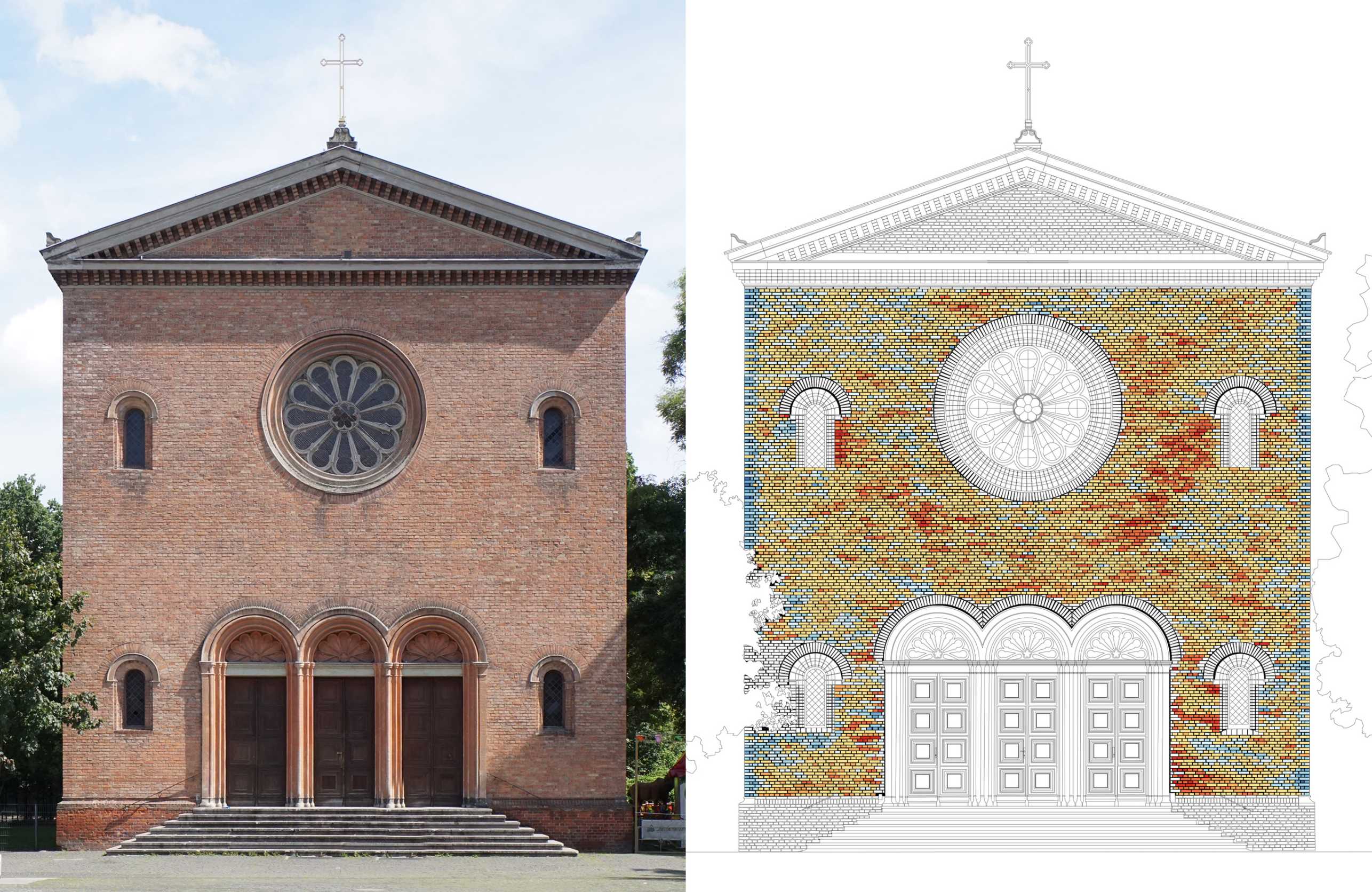W. Potgeter: Brick Construction in the Age of Industrialisation
Dissertation project by Wilko Potgeter on the subject "Brick construction in the age of industrialisation: Building technique of facing brick in the German-speaking countries from Schinkel's era to brick expressionism"
Brick construction in the age of industrialisation: Building technique of facing brick in the German-speaking countries from Schinkel's era to brick expressionism
In the history of brick, the 19th century played a decisive role. In the preceding centuries, the material was mostly hidden behind façades of plaster and ashlar in the German-speaking world, but it reappeared on the surface with the beginning of the 19th century. Starting with some early initial buildings of the 1820s, a phenome-non unfolded that was contemporarily referred to as “Backstein-Rohbau”. Unlike today, where the German expression “Backstein-Rohbau” means a building that is still unfinished, in the 19th century the term described buildings with representative façades that were deliberately executed in brick.
Ordinary bricks were considered unsatisfactory for visible use, both aesthetically and in terms of building physics, which is why specially manufactured so-called “Verblendsteine” (facing bricks) were used for the outer skin. In the German-speaking countries, Karl Friedrich Schinkel (1781–1841) in Berlin supplied the most important impulses for this development. Starting already with his first buildings, he began to exhaust the technical possibilities of the material. The ideal he strived for of bricks that were as smooth and sharp-edged as possible remained influential for the rest of the 19th century and, in the context of omnipresent industrialisation, led to profound changes in the manufacturing and building process.
The movement of the Backstein-Rohbau in the 19th century has already been extensively considered in architectural history from an art-historical perspective interested in its formal language, but interestingly enough, the under-lying constructional aspects have only received sporadic attention until now. Nevertheless, from the perspective of the time, aesthetic and technical developments were inseparably linked: it was only through technical changes in the manufacturing process that the aesthetic demands of architects could be satisfied, while the more and more consolidated and established product range of facing bricks favoured a brick-faced façade design. Especially the brick façades of the late 19th century, which can be found in nearly all of the respective quarters of every major German-speaking city, cannot be understood, including in their artistic dimension, without knowledge of the technical background of the facing bricks, which were available as mass-produced goods since they had been standardised in 1879.
Focusing on the two centres of facing brick architecture in Germany, Munich and especially Berlin (the capital of the Backstein-Rohbau-movement), this work examines facing bricks, which were extremely influential in 19th century architecture, from the perspective of the history of building technology. Based on constructional aspects, the brick faced façade is revealed as a complex phenomenon that cannot be under-stood simply as an artistic trend, but that was embedded in a dynamic field between aesthetic ideas, technical possibilities and economic and political conditions. The study traces the history from Schinkel's first buildings via the development of locally anchored facing brickyards through to the establishment of a centralised facing brick industry in the late 19th century, which largely transformed the building sector in a very short time. The thesis concludes with a consideration of the circumstances that led to the demise of the Backstein-Rohbau and the associated facing brick industry at the beginning of the 20th century.
- Potgeter, Wilko; Holzer, Stefan M.: Backsteinstadt Zürich: Der Sichtbackstein-Boom zwischen 1883 und 1914. Zürich, 2021. (external page Park Books)
- Potgeter, W.: Sichtbackstein in Zürich 1883–1914. In: Ziegelei-Museum, Band 37, 2020, 57–69. (Research Collection)
- Potgeter, W.: Bautechnik des Berliner Backstein-Rohbaus von Schinkel bis Blankenstein. In: INSITU, Heft 1, 2020, 131–149. (Research Collection)
- Potgeter, W.; Holzer, S. M.: Sichtbackstein in Zürich 1883–1914. ETH Zürich, Institut für Denkmalpflege und Bauforschung IDB, 2019/2020.
(Download / Research Collection)
- Potgeter, W.; Holzer, S. M.: Sichtbackstein des 19. Jahrhunderts. Herstellungstechnik und Spuren an erhaltenen Bauwerken. In: architectura. Zeitschrift für Geschichte der Baukunst, Band 47, Heft 1+2 2017, 2019, 54–75. (Research Collection)
- Potgeter, W..: Facing Bricks in the Nineteenth Century. Developments in Manufacture and Construction of Brick Façades in German-Speaking Countries. In: Campbell, J., et al. (Eds.): Water, Doors and Buildings: Studies in the History of Construction. The Proceedings of the Sixth Conference of the Construction History Society, Queens' College Cambridge 5–7 April 2019. Cambridge: Construction History Society, 2019, 435–450. (Research Collection)
- Sichtbackstein in Zürich 1883-1914. (4th Annual Conference of the Gesellschaft für Bautechnigeschichte, Hannover, 10.05.2019)
- Facing Bricks in the Nineteenth Century. Developments in Manufacture and Construction of Brick Façades in German-Speaking Countries. (Sixth Conference of the Construction History Society; Cambridge, 6.4.2019)

